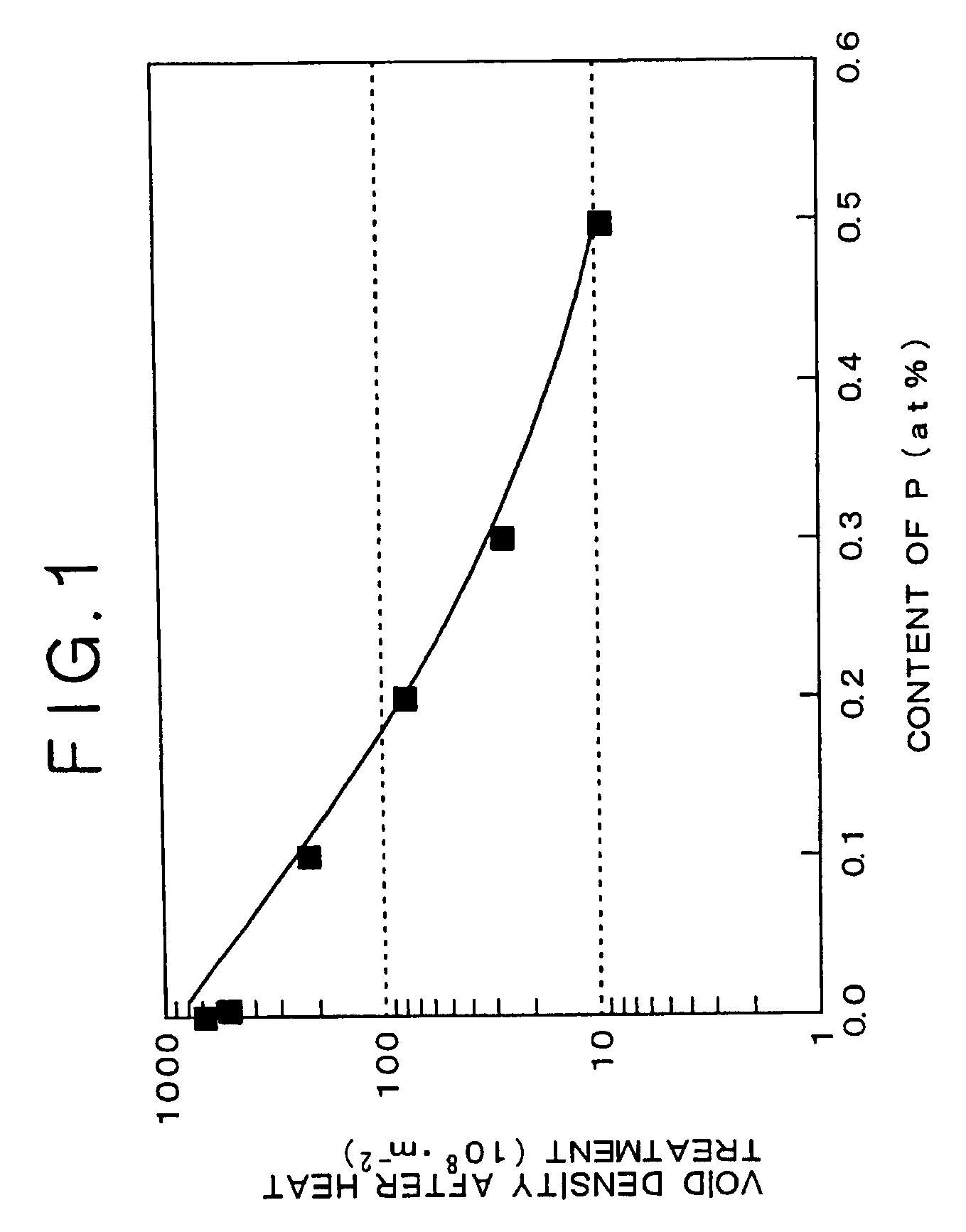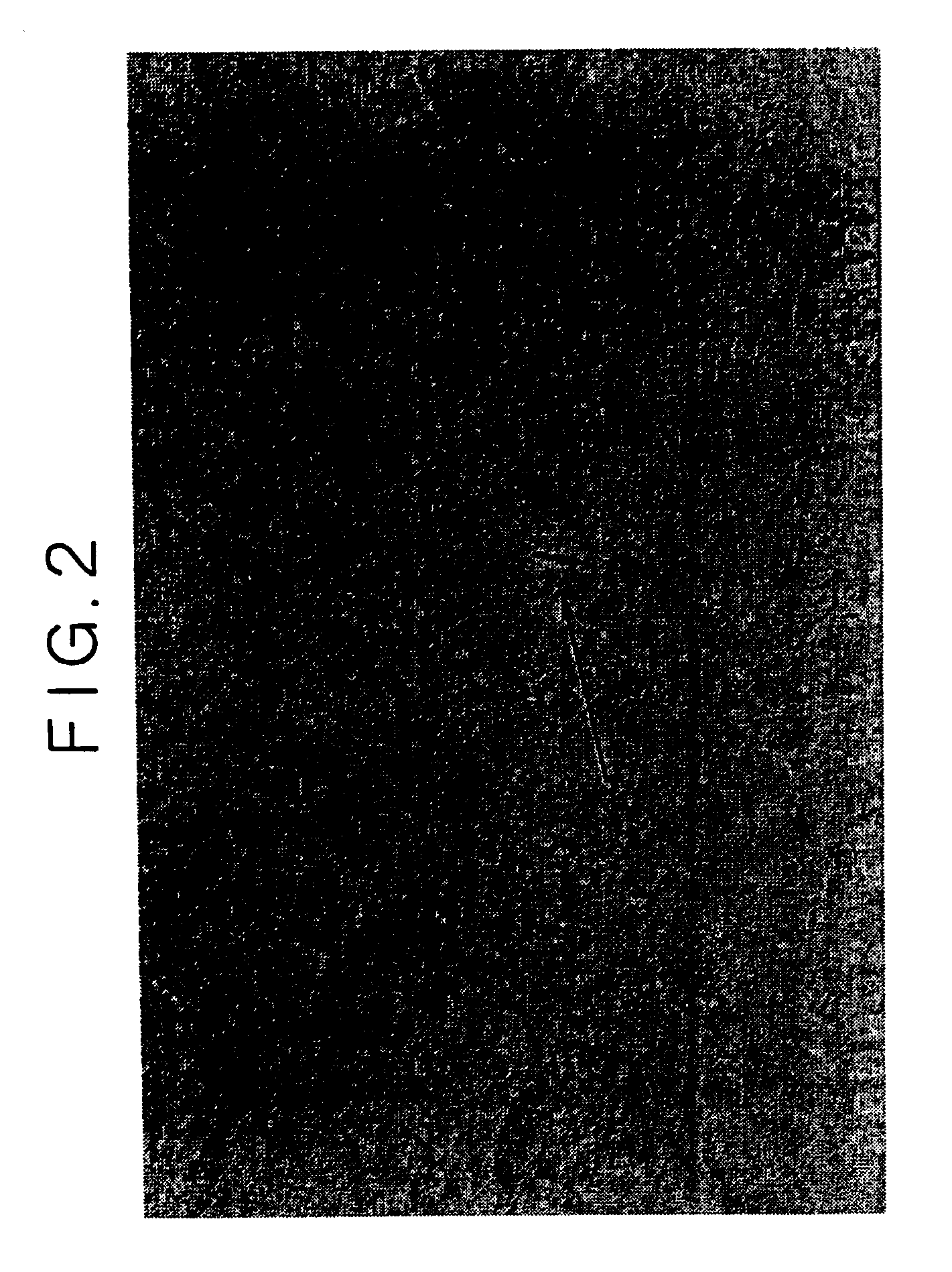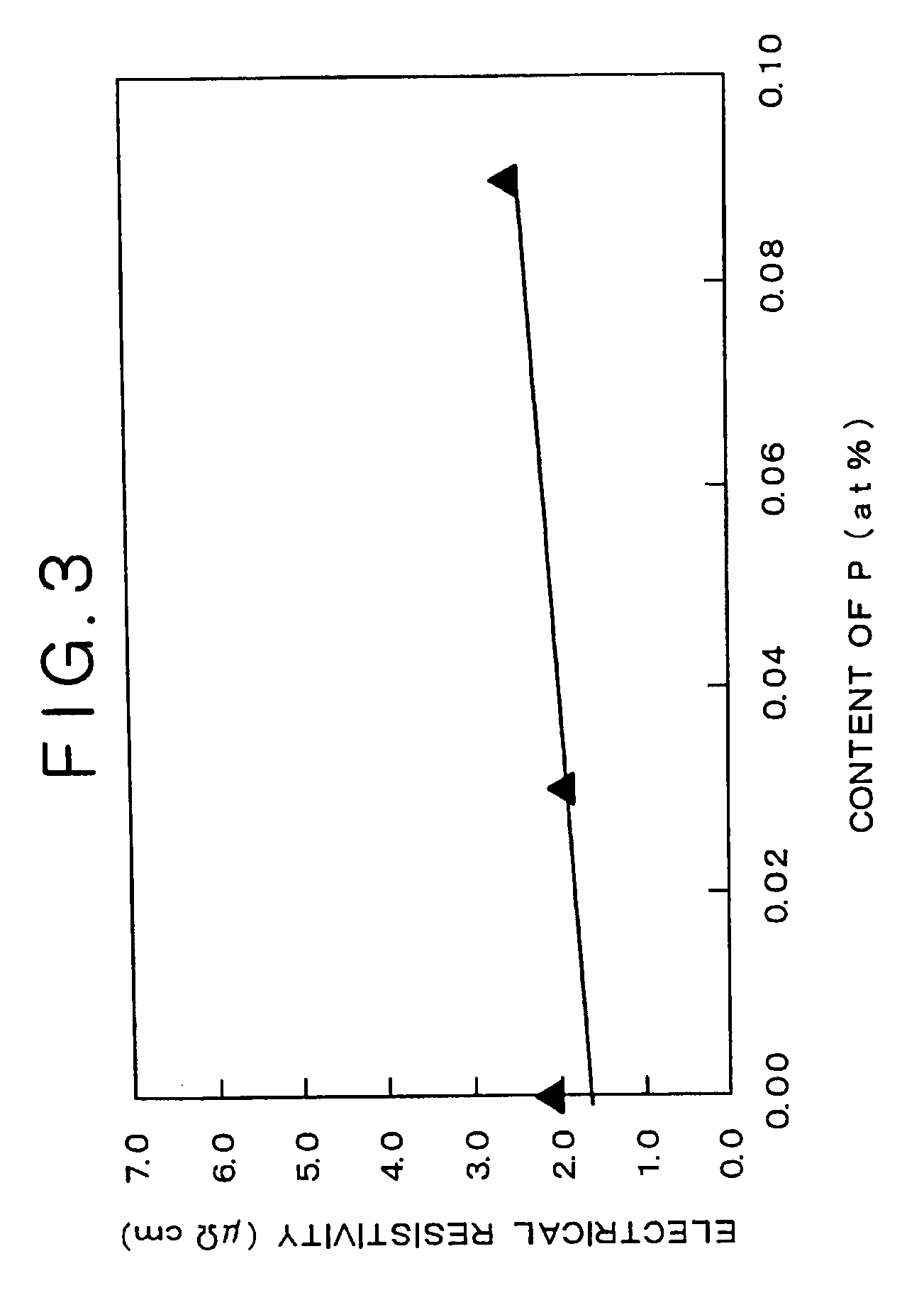Copper alloy thin films, copper alloy sputtering targets and flat panel displays
a technology of copper alloy and sputtering target, which is applied in the direction of semiconductor/solid-state device details, instruments, transportation and packaging, etc., can solve the problems of poor adhesion with glass substrate, insulation failure, and reduce the reliability of interconnection, and achieve satisfactory reliability and low electrical resistivity
- Summary
- Abstract
- Description
- Claims
- Application Information
AI Technical Summary
Benefits of technology
Problems solved by technology
Method used
Image
Examples
example 1
[0074]A sputtering target comprising a Cu alloy containing 0.28 atomic percent of Fe and 0.25 atomic percent of P with the balance being Cu and inevitable impurities was prepared by vacuum melting process. Using the sputtering target, a Cu—Fe—P alloy thin film having a thickness of 300 nm was deposited on a glass substrate (#1737 glass available from Corning Inc.) having a diameter of 50.8 mm and a thickness of 0.7 mm by DC magnetron sputtering. The composition of the Cu—Fe—P alloy thin film was analyzed by inductively coupled plasma (ICP) atomic emission spectrometry to find that the content of Fe is 0.28 atomic percent and that the content of P is 0.05 atomic percent. Upon film deposition, about 80% of P was not probably yielded due to its high vapor pressure.
[0075]Next, a positive-type photoresist (thickness of 1 μm) was patterned on the Cu-0.28 atomic percent Fe-0.05 atomic percent P alloy thin film, was etched with a mixed acid etchant, and the photoresist was removed with a ph...
example 2
[0077]A sputtering target comprising a Cu alloy containing 0.35 atomic percent of Co and 0.25 atomic percent of P with the balance being Cu and inevitable impurities was prepared by vacuum melting process. Using the sputtering target, a Cu—Co—P alloy thin film having a thickness of 300 nm was deposited on a glass substrate (#1737 glass available from Corning Inc.) having a diameter of 50.8 mm and a thickness of 0.7 mm by DC magnetron sputtering. The composition of the Cu—Co—P alloy thin film was analyzed By inductively coupled plasma (ICP) atomic emission spectrometry to find that the content of Co is 0.35 atomic percent and that the content of P is 0.05 atomic percent. Upon film deposition, about 80% of P was not probably yielded due to its high vapor pressure as in Example 1.
[0078]Next, a positive-type photoresist (thickness of 1 μm) was patterned on the Cu-0.35 atomic percent Co-0.05 atomic percent P alloy thin film, was etched with a mixed acid etchant, and the photoresist was r...
example 3
[0080]A sputtering target comprising a Cu alloy containing 0.5 atomic percent of Mg and 0.25 atomic percent of P with the balance being Cu and inevitable impurities was prepared by vacuum melting process. Using the sputtering target, a Cu—Mg—P alloy thin film having a thickness of 300 nm was deposited on a glass substrate (#1737 glass available from Corning Inc.) having a diameter of 50.8 mm and a thickness of 0.7 mm by DC magnetron sputtering. The composition of the Cu—Mg—P alloy thin film was analyzed By inductively coupled plasma (ICP) atomic emission spectrometry to find that the Mg content is 0.5 atomic percent and that the content of P is 0.05 atomic percent. Upon film deposition, about 80% of P was not probably yielded due to its high vapor pressure, as in Examples 1 and 2.
[0081]Next, a positive-type photoresist (thickness of 1 μm) was patterned on the Cu-0.5 atomic percent Mg-0.05 atomic percent P alloy thin film, was etched with a mixed acid etchant, and the photoresist was...
PUM
| Property | Measurement | Unit |
|---|---|---|
| resistivity | aaaaa | aaaaa |
| grain boundaries | aaaaa | aaaaa |
| void density | aaaaa | aaaaa |
Abstract
Description
Claims
Application Information
 Login to View More
Login to View More - R&D
- Intellectual Property
- Life Sciences
- Materials
- Tech Scout
- Unparalleled Data Quality
- Higher Quality Content
- 60% Fewer Hallucinations
Browse by: Latest US Patents, China's latest patents, Technical Efficacy Thesaurus, Application Domain, Technology Topic, Popular Technical Reports.
© 2025 PatSnap. All rights reserved.Legal|Privacy policy|Modern Slavery Act Transparency Statement|Sitemap|About US| Contact US: help@patsnap.com



